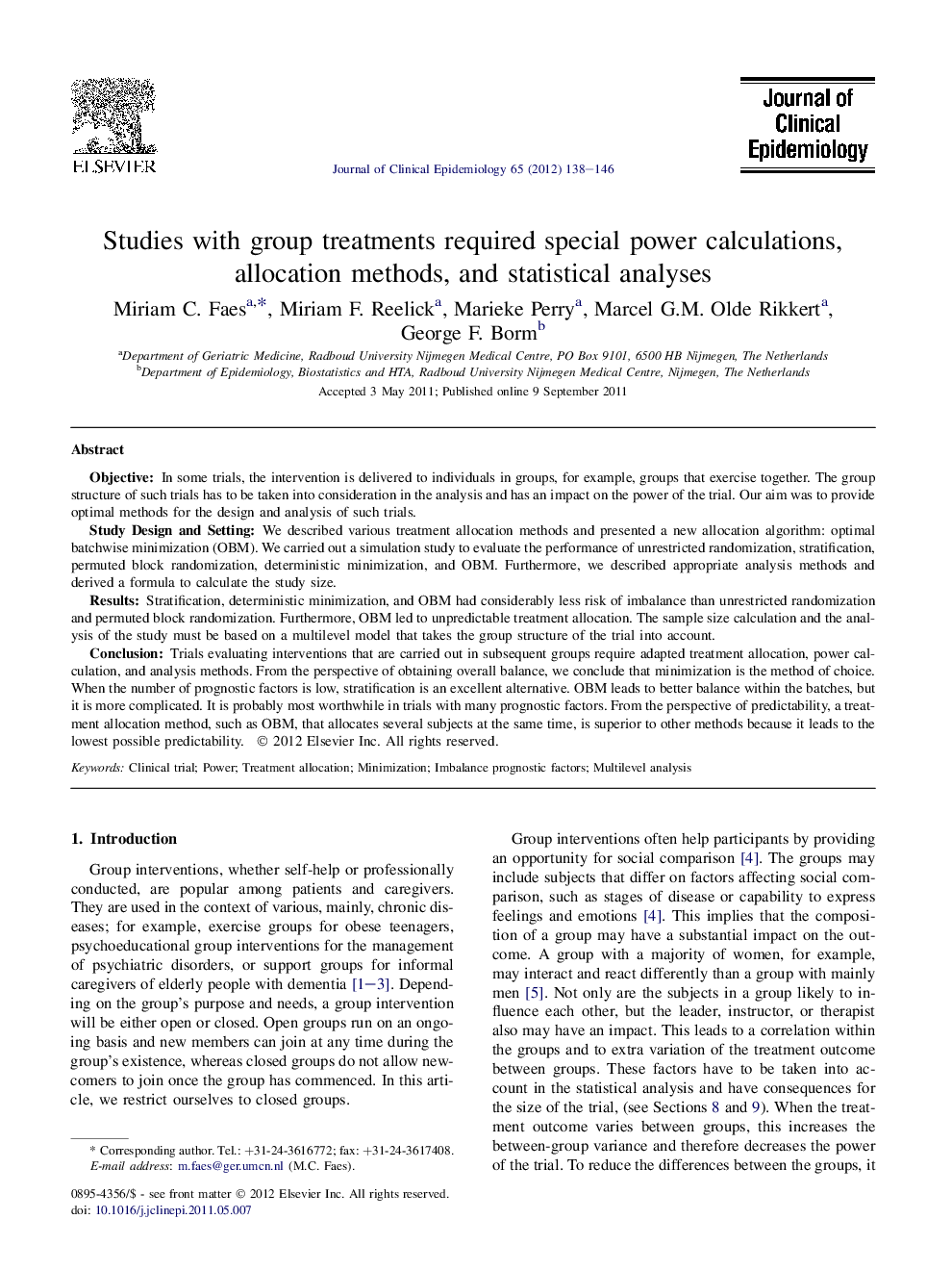| Article ID | Journal | Published Year | Pages | File Type |
|---|---|---|---|---|
| 10514311 | Journal of Clinical Epidemiology | 2012 | 9 Pages |
Abstract
Trials evaluating interventions that are carried out in subsequent groups require adapted treatment allocation, power calculation, and analysis methods. From the perspective of obtaining overall balance, we conclude that minimization is the method of choice. When the number of prognostic factors is low, stratification is an excellent alternative. OBM leads to better balance within the batches, but it is more complicated. It is probably most worthwhile in trials with many prognostic factors. From the perspective of predictability, a treatment allocation method, such as OBM, that allocates several subjects at the same time, is superior to other methods because it leads to the lowest possible predictability.
Related Topics
Health Sciences
Medicine and Dentistry
Public Health and Health Policy
Authors
Miriam C. Faes, Miriam F. Reelick, Marieke Perry, Marcel G.M. Olde Rikkert, George F. Borm,
